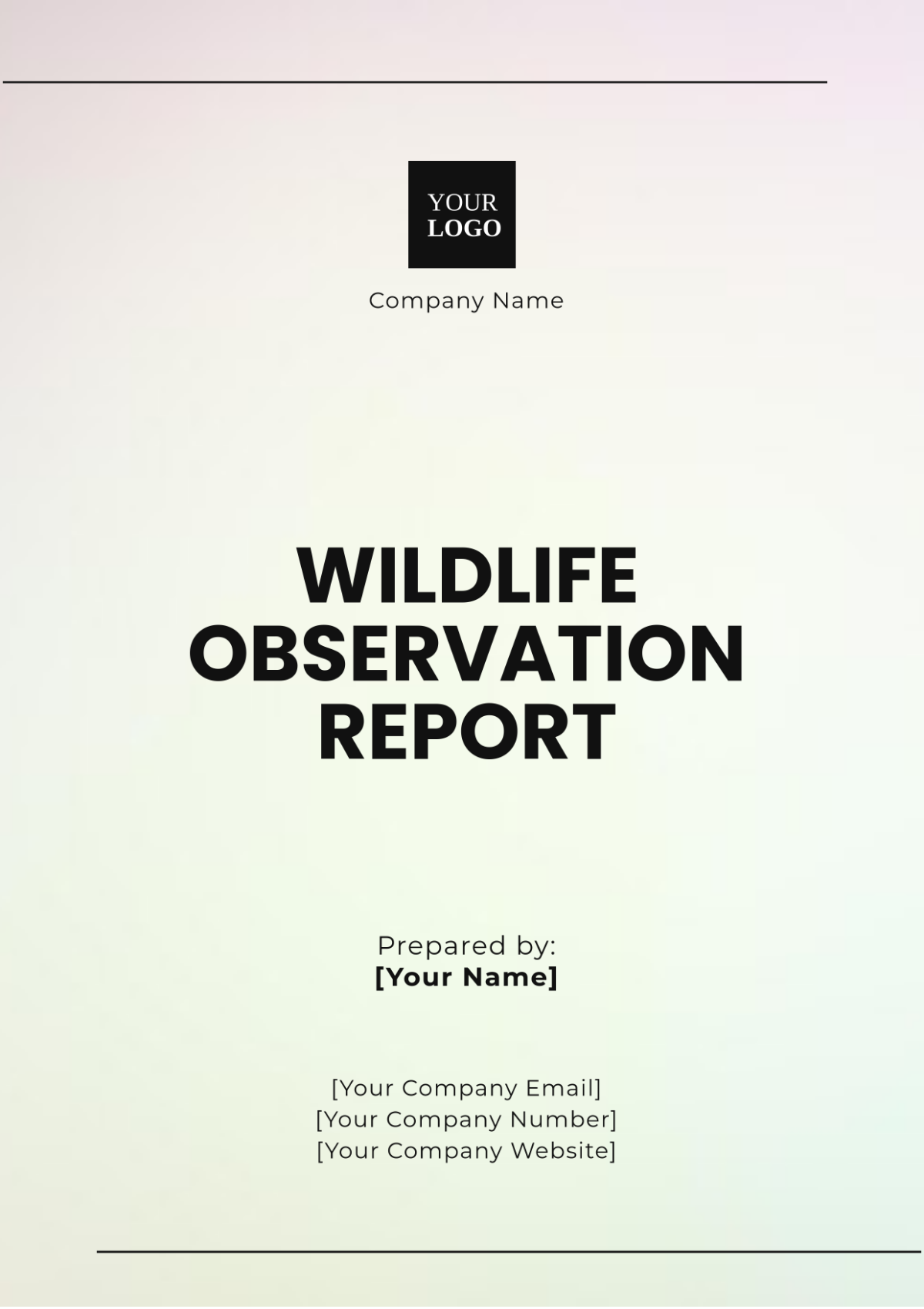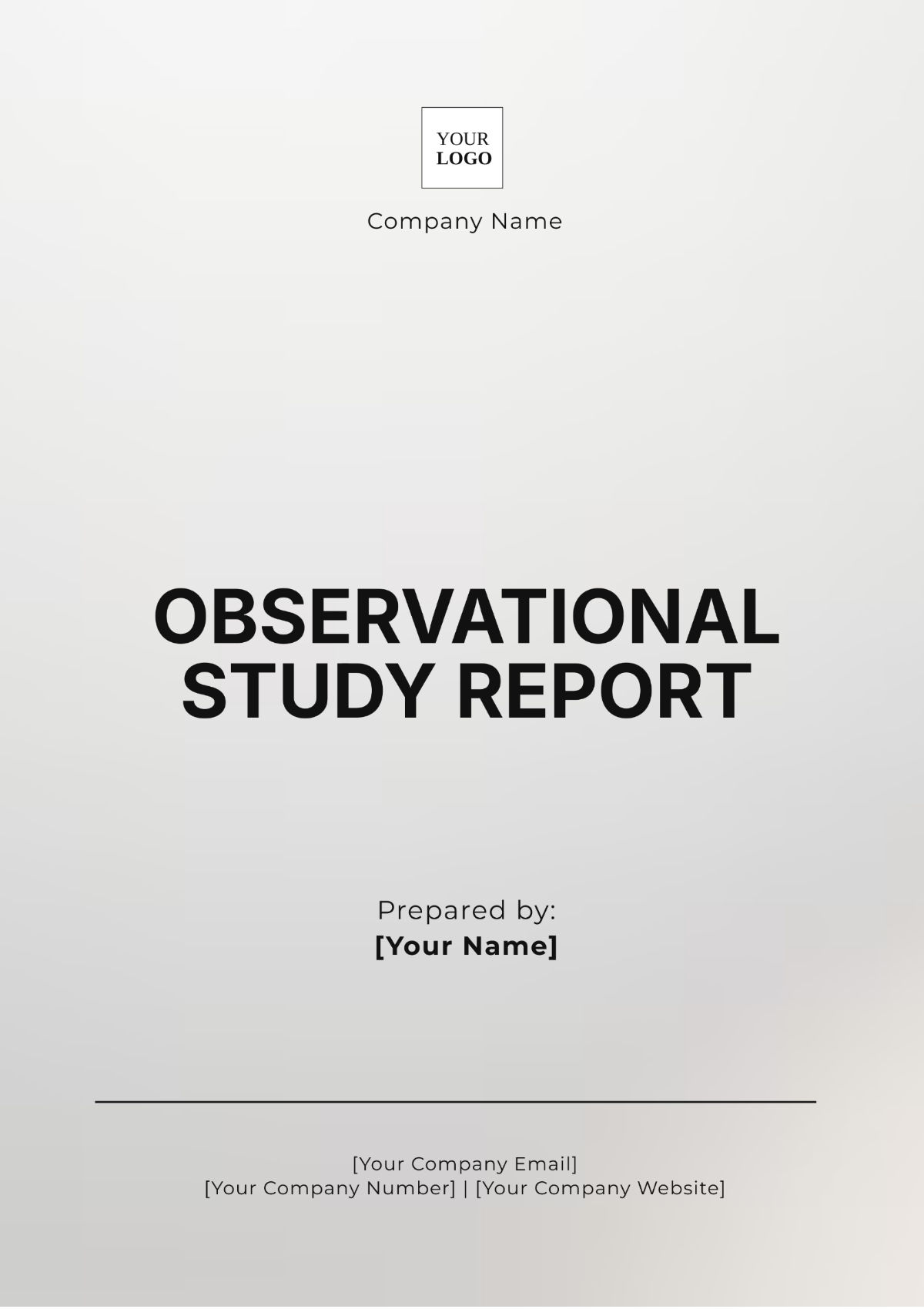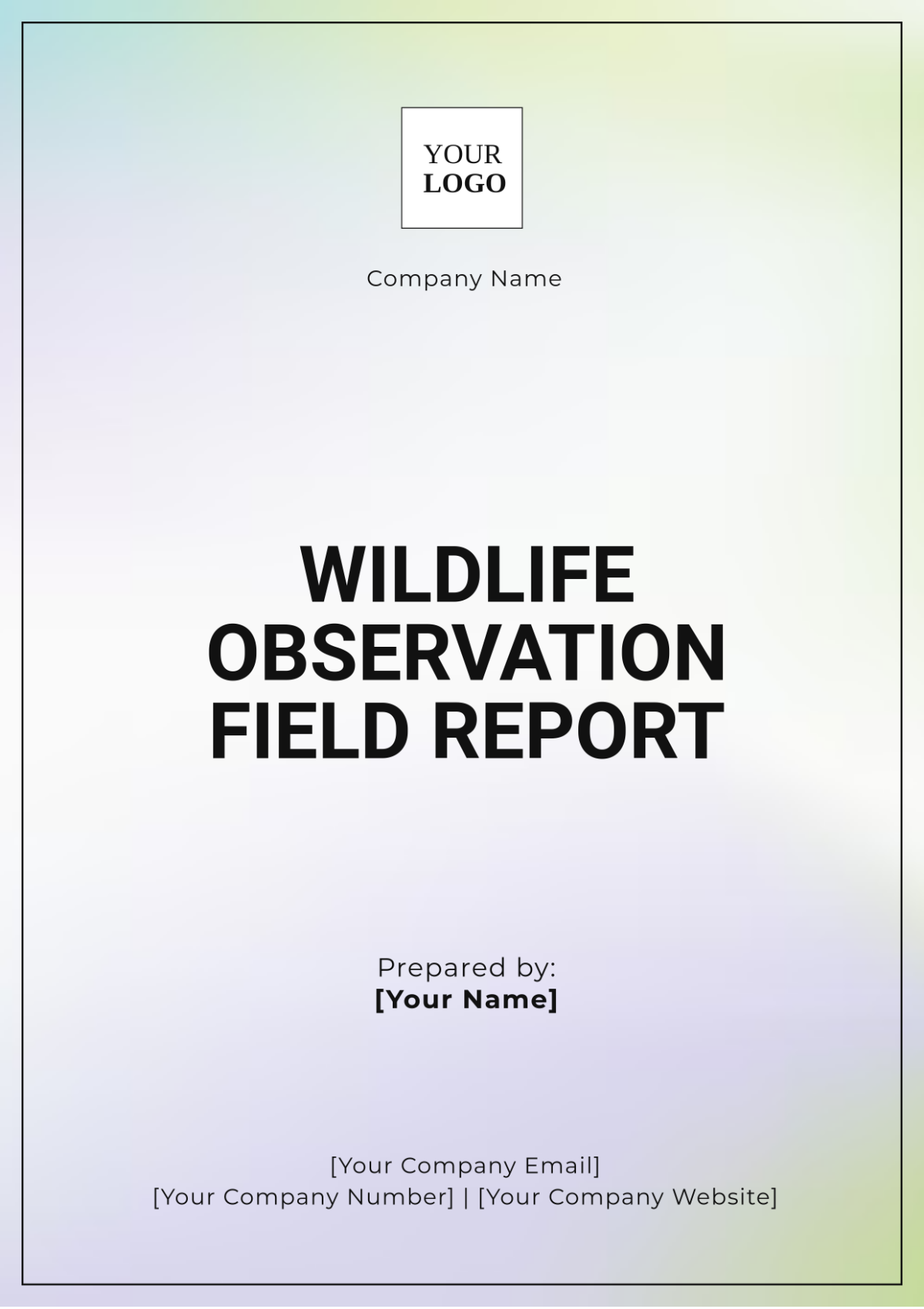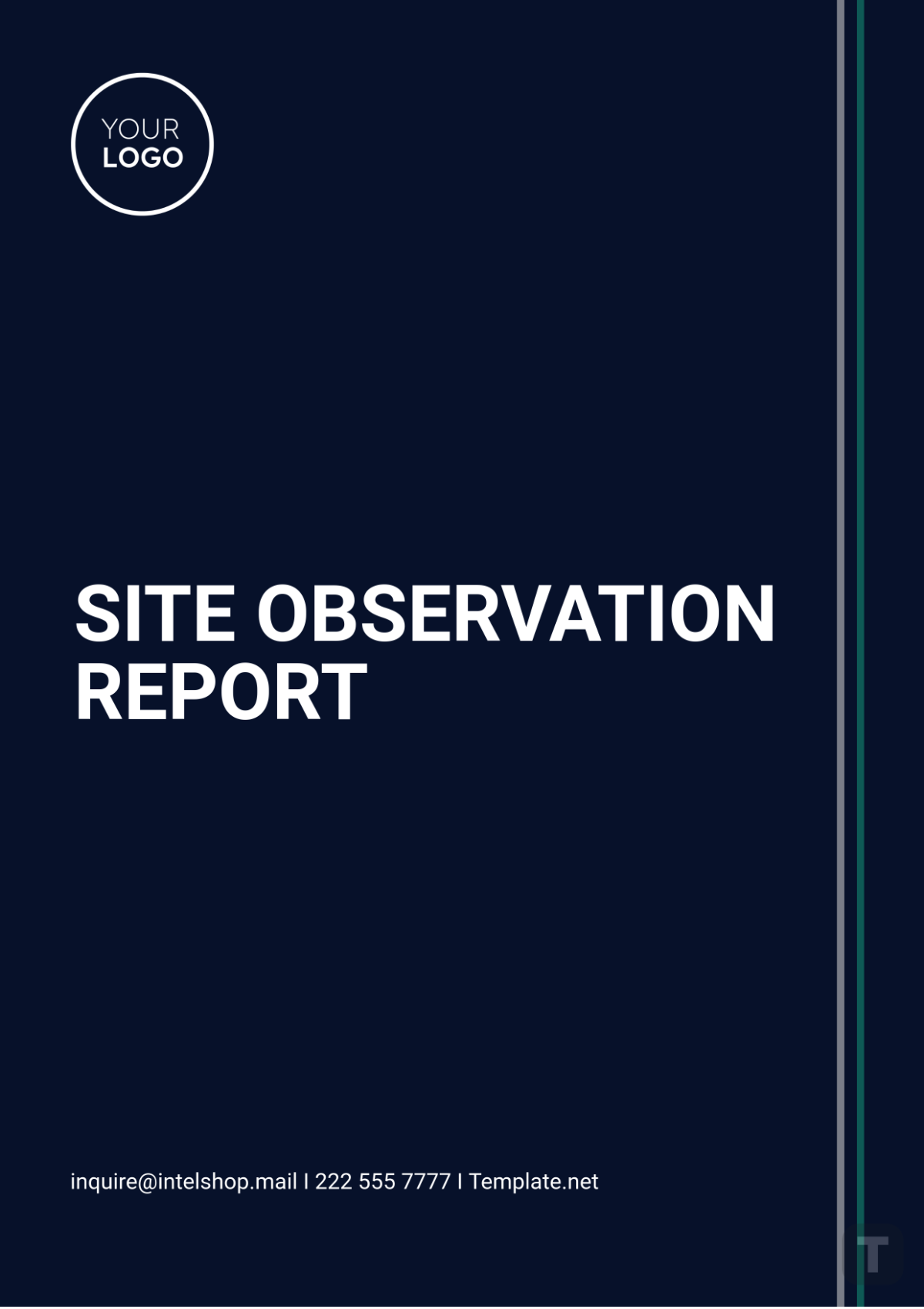Free Wildlife Observation Report

- 100% Customizable, free editor
- Access 1 Million+ Templates, photo’s & graphics
- Download or share as a template
- Click and replace photos, graphics, text, backgrounds
- Resize, crop, AI write & more
- Access advanced editor
Capture detailed wildlife observations effortlessly with Template.net’s Wildlife Observation Report Template. This editable and customizable template is perfect for documenting animal behavior, environmental conditions, and sightings. Editable in our Ai Editor Tool, it allows you to personalize your report with ease, ensuring a professional and organized presentation every time. Ideal for wildlife researchers and enthusiasts alike.
You may also like
- Sales Report
- Daily Report
- Project Report
- Business Report
- Weekly Report
- Incident Report
- Annual Report
- Report Layout
- Report Design
- Progress Report
- Marketing Report
- Company Report
- Monthly Report
- Audit Report
- Status Report
- School Report
- Reports Hr
- Management Report
- Project Status Report
- Handover Report
- Health And Safety Report
- Restaurant Report
- Construction Report
- Research Report
- Evaluation Report
- Investigation Report
- Employee Report
- Advertising Report
- Weekly Status Report
- Project Management Report
- Finance Report
- Service Report
- Technical Report
- Meeting Report
- Quarterly Report
- Inspection Report
- Medical Report
- Test Report
- Summary Report
- Inventory Report
- Valuation Report
- Operations Report
- Payroll Report
- Training Report
- Job Report
- Case Report
- Performance Report
- Board Report
- Internal Audit Report
- Student Report
- Monthly Management Report
- Small Business Report
- Accident Report
- Call Center Report
- Activity Report
- IT and Software Report
- Internship Report
- Visit Report
- Product Report
- Book Report
- Property Report
- Recruitment Report
- University Report
- Event Report
- SEO Report
- Conference Report
- Narrative Report
- Nursing Home Report
- Preschool Report
- Call Report
- Customer Report
- Employee Incident Report
- Accomplishment Report
- Social Media Report
- Work From Home Report
- Security Report
- Damage Report
- Quality Report
- Internal Report
- Nurse Report
- Real Estate Report
- Hotel Report
- Equipment Report
- Credit Report
- Field Report
- Non Profit Report
- Maintenance Report
- News Report
- Survey Report
- Executive Report
- Law Firm Report
- Advertising Agency Report
- Interior Design Report
- Travel Agency Report
- Stock Report
- Salon Report
- Bug Report
- Workplace Report
- Action Report
- Investor Report
- Cleaning Services Report
- Consulting Report
- Freelancer Report
- Site Visit Report
- Trip Report
- Classroom Observation Report
- Vehicle Report
- Final Report
- Software Report
Wildlife Observation Report
Prepared by: [Your Name]
Date: October 21, 2050
I. Introduction
The Wildlife Observation Report provides a comprehensive analysis of animal species' behaviors, interactions, and habitat utilization within the Green Valley Nature Reserve. This report captures insights gained over a two-week observational period in October 2050. The goal is to better understand the dynamics of the local wildlife population and to highlight any ecological shifts that may indicate changes in the environment or animal behavior. This data is crucial for future conservation efforts, ensuring that the reserve remains a thriving habitat for diverse species. The following report presents a summary of the behaviors, habitat preferences, and notable occurrences observed during this period.
II. Methodology
A. Study Area
The study was conducted within the Green Valley Nature Reserve, located in the northeastern region of the state. The reserve covers approximately 10,000 hectares, with ecosystems ranging from wetlands to mixed woodlands and grasslands. These diverse habitats are home to a wide variety of species, both resident and migratory, and were chosen for their high biodiversity and ease of access for research purposes.
Elevation: 150–350 meters above sea level
Average Temperature during Study: 18°C to 23°C
Precipitation: Moderate rainfall of approximately 50mm during the observation period
B. Data Collection
Data was collected using a combination of direct observation, wildlife cameras, and GPS tracking. Volunteers and researchers were stationed at different observation points throughout the reserve. Shifts were scheduled in six-hour blocks, from sunrise to sunset, ensuring coverage during peak activity hours for both diurnal and nocturnal species.
Observers recorded species sightings, behaviors, interactions, and habitat use in real time. Field notes were supplemented with digital recordings and photographs captured with wildlife cameras. This method ensured that a comprehensive record of the animals' activities and habitat preferences was maintained.
Observation Timeframe: October 1–15, 2050
Observation Shift Duration: 6 hours (each shift)
C. Tools and Equipment
Binoculars: 10x magnification, used for distant observations
GPS Devices: For precise location tracking of wildlife sightings
Wildlife Cameras: Strategically placed in high-traffic areas to monitor nocturnal activity
Voice Recorders: For audio documentation of animal sounds and interactions
Field Notebooks: For detailed observations and field notes
III. Results/Findings
A. Species Observed
Species | Number of Individuals | Common Behaviors |
|---|---|---|
Eastern Bluebird | 15 | Nesting, foraging, territorial displays |
White-tailed Deer | 8 | Browsing, territorial displays, grazing in groups |
Red Fox | 4 | Hunting, social interactions, denning behavior |
American Woodcock | 3 | Ground foraging, displaying courtship behavior |
Wild Turkey | 10 | Foraging in groups, roosting in trees at night |
Species Behavior Observations:
Eastern Bluebirds: Observed in small groups, primarily in open grasslands with sparse trees. Their behaviors included foraging on insects and small fruits. Notably, two pairs were seen engaging in early nesting behavior, which is unusual for this time of year.
White-tailed Deer: A group of 8 was consistently seen grazing near the forest's edge, often accompanied by juvenile deer. Several territorial displays were noted, including posturing and scent-marking near water sources.
Red Foxes: Four individuals were observed at different locations along the forest's edge. They exhibited typical predatory behavior, including hunting for small mammals. An intriguing social dynamic was observed, with two adult foxes frequently interacting with what appeared to be a younger fox, suggesting a family group structure.
American Woodcock: Several woodcocks were observed on the forest floor, performing courtship displays with wing fluttering and calling in the late hours of the day.
B. Habitat Observations
Eastern Bluebirds: Primarily concentrated in open grasslands and savanna-like areas. These birds were found foraging on insects and small fruits near patches of sparse trees and low shrubs, which provide nesting sites.
White-tailed Deer: Spotted in dense, wooded areas with ample underbrush. These locations offer both food (leaves and grasses) and coverage from predators. Deer were often seen near water sources during early morning hours.
Red Foxes: Their preferred habitat was forest edges and areas with mixed deciduous trees. The foxes were often seen hunting near fallen logs or around open clearings, indicating their adaptability to various microhabitats within the reserve.
Wild Turkey: Observed foraging in mixed forest and grassland edges, where they could easily find acorns, seeds, and small insects.
C. Notable Occurrences
Red Fox Family Dynamics: A particularly interesting observation was made of a family group of red foxes, which included an adult pair and their young. This social structure is uncommon for red foxes in this region and suggests a potential shift in social behavior due to environmental factors or resource availability.
Early Nesting by Eastern Bluebirds: Two pairs of bluebirds were seen engaging in early nesting behaviors. This behavior is atypical for this time of year, possibly influenced by the unseasonably warm temperatures and increased food availability.
Unusual Grazing Patterns by White-tailed Deer: Deer were observed browsing in unusual patterns, often feeding later in the day, which might indicate a shift in their foraging behavior due to increased human activity in neighboring areas or other environmental pressures.
IV. Discussion
The findings from this observation period highlight several key trends in the behavior and habitat use of wildlife in the Green Valley Nature Reserve. The Eastern Bluebirds appear to be thriving, potentially as a result of ongoing habitat restoration efforts, including the removal of invasive plant species and replanting of native flora. The presence of early nesting behavior may also indicate a response to a mild fall season, suggesting that these birds are taking advantage of favorable environmental conditions.
The Red Foxes are exhibiting social behaviors that may reflect adaptive strategies to cope with increasing habitat fragmentation. Their ability to form family units is likely a survival mechanism, as it provides more effective hunting and protection for young foxes. This behavior could also suggest a response to increasing competition for food resources within the area.
The White-tailed Deer continue to show strong population stability, though their unusual grazing patterns warrant further investigation, as they may signal changes in food availability or predator presence.
V. Conclusion
This report underscores the dynamic nature of wildlife populations in Green Valley Nature Reserve. Observing these species during this period has provided valuable data on behavioral trends and habitat use. These insights are essential for refining conservation strategies and understanding the long-term impacts of environmental change on local ecosystems.
VI. Recommendations
Monitoring and Conservation of Eastern Bluebirds:
Continue habitat restoration efforts, especially in grassland and open forest areas to support nesting and foraging.
Implement early nesting habitat protection to ensure these birds can thrive during their breeding season.
Family Group Observation of Red Foxes:
Initiate further studies on fox family dynamics, focusing on their social structures and adaptability to fragmented habitats.
Increase the use of wildlife cameras to gather data on fox populations during different seasons.
Continued Research on White-tailed Deer Grazing Patterns:
Conduct studies to understand food availability and predator pressure affecting deer behavior.
Consider limiting human activity in areas where deer are frequently observed to reduce stress and preserve natural behavior.
VII. References
Smith, J. & Allen, T. (2050). Wildlife Habitats and Behavioral Patterns in Northeastern Reserves. Environmental Studies Journal, 58(3), 210-225.
Green Valley Nature Reserve Annual Report. (2050). Wildlife Monitoring and Habitat Restoration Efforts.
Jones, R. (2052). Ecological Observations of Fox Families in Fragmented Forests. Journal of Mammalogy, 92(2), 135-150.




